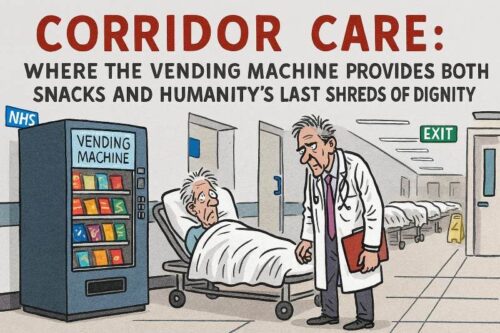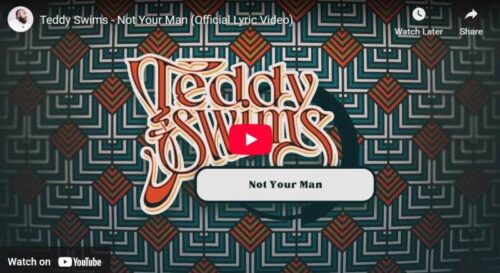Estimated reading time at 200 wpm: 11 minutes
Decision-making is something I’ve explored before. I go deeper this time. Everybody believes that they are making the best decisions for themselves. But how good are those decisions, actually?
No psychologist is coming to tell you what’s what in the confines of your own cranium.
Whether or not you agree our Fat Disclaimer applies
We humans make countless decisions every day, from the trivial to the transformative. Each choice, whether it’s what to have for breakfast or how to invest our savings, feels like a deliberate act. We might imagine ourselves as purely logical beings, weighing up the pros and cons, assessing risks and rewards with cool detachment. Yet, the reality of human decision-making is far more intricate and fascinating. It is a complex interplay where objective facts often collide with subjective feelings. Our reasoned thoughts often battle with ingrained habit. We wrestle with perception and reality. External influences may subtly steer our course. Understanding our mental estate – how our minds genuinely arrive at a conclusion—is key to making more effective choices and truly appreciating the subtle forces at play when we make up our minds. Understanding all this may assist with making more effective choices and truly appreciating the subtle forces at play when we’re making up our minds. But wait – understanding does not mean you’ll change what you do or how you do it.
The human heart can justify whatever it favours.
The Blend of Heart and Head
When faced with a decision, we often like to believe our choices are the product of careful, rational analysis. We might picture ourselves as detached strategists, meticulously weighing facts and figures, or calculating precise probabilities. This ideal of pure logic, however, seldom aligns with the messy, human reality of how decisions are truly made. In truth, our minds are far more complex, weaving together intellect with intuition, cold hard data with warm, often impulsive, feelings.
This complex reality is vividly captured by the work of Nobel laureate Daniel Kahneman, who distinguished between two fundamental ways our minds operate. He described “System 2” as our deliberate, analytical side, the part that engages in complex problem-solving or carefully considers a financial investment. It demands conscious effort and is capable of intricate logical steps. Much of our daily decision-making is instead governed by “System 1.” This is our fast, automatic, intuitive side, responsible for gut feelings, snap judgments, and immediate reactions. It allows us to navigate the world quickly, making countless choices without expending significant mental energy. While highly efficient, System 1 thinking is also susceptible to a host of unconscious biases and emotional influences, often leading us to rely on mental shortcuts rather than exhaustive logical processing.
Indeed, emotions are not mere intruders in the realm of reason; they are integral to it. Neuroscientific research demonstrates that our capacity for logical thought is deeply intertwined with our emotional processing. People who suffer damage to the parts of their brain responsible for emotions often find themselves paralysed by even the simplest decisions, unable to assign value or meaning to different options. This suggests that feelings provide a vital framework, helping us to prioritise information and imbue our choices with significance.
A decision might feel “right” or “wrong” long before our logical brain can fully articulate the reasons why. This ‘affect heuristic‘ means we often lean towards choices that evoke positive emotions and shy away from those that trigger negative ones, sometimes without fully realising the emotional roots of our preference.
Beyond the Data: The Unseen Hand of Influence
When confronting a significant choice, many of us instinctively turn to data. We might pore over statistics, compare specifications, or meticulously analyse pros and cons. There is a common belief that the most rational choice emerges from a thorough, objective assessment of all available information. Yet, this reliance on pure data often overlooks the profound, sometimes hidden, forces that truly steer our decisions, forming an “unseen hand” of influence. Our choices are not merely cold calculations; they are deeply human acts, shaped by factors far beyond the numbers on a spreadsheet.
The information itself plays a complex role, often manipulated by subtle presentation. This is where ‘framing effects‘ become apparent. The very same facts can be presented in different ways, leading to vastly different choices. For instance, a medical treatment described as having a “90% success rate” sounds far more appealing than one with a “10% failure rate,” even though the statistical information is identical. Our emotional response to positive or negative phrasing can significantly influence our perception of risk and reward, nudging our decision without our conscious awareness. This highlights that it is not just the content of information, but its emotional resonance, that matters.
Furthermore, our decisions are rarely made in a social vacuum. We are profoundly influenced by the people around us, whether they are close friends, family, or even anonymous online reviewers. This concept of ‘social proof‘ means we often look to the actions and opinions of others as a guide, assuming that if many people are doing something, it must be the correct or desirable choice. The desire to conform, to be accepted, or simply to feel part of a group can lead us to adopt preferences that are not entirely our own. This powerful social current can override individual data analysis, compelling us to choose options that align with prevailing trends or the perceived wisdom of the crowd, rather than what an objective assessment might suggest.
Smart Choices: The True Power of Understanding Ourselves
In a world brimming with complex options and persuasive influences, the pursuit of “smart choices” often focuses on external factors: gathering more data, seeking expert advice, or employing sophisticated analytical tools. While these elements are undoubtedly useful, the true power behind making consistently effective decisions lies within. It resides in a profound understanding of ourselves—our cognitive patterns, emotional triggers, and inherent biases. This self-awareness is the bedrock upon which genuinely intelligent decision-making is built, allowing us to navigate life’s choices with greater clarity and resilience.
One crucial aspect of self-understanding is recognising our own cognitive biases. These are not flaws in our thinking, but rather systematic shortcuts our brains employ to process information quickly. However, these shortcuts can lead us astray. For instance, ‘confirmation bias‘ makes us prone to favouring information that confirms what we already believe, while ignoring contradictory evidence. Becoming aware of this tendency allows us to actively seek out diverse perspectives and challenge our initial assumptions, rather than simply reinforcing them. Similarly, understanding our own ‘risk tolerance‘—whether we are naturally cautious or inclined to take chances—can help us make choices that genuinely align with our comfort levels, reducing future regret.
Beyond cognitive patterns, emotional self-awareness is equally vital. Our feelings, as discussed previously, are not just reactions but powerful forces that shape our perceptions and drive our impulses. Learning to identify and understand our emotional states before making a decision enables us to differentiate between a truly reasoned choice and one driven by momentary frustration, anxiety, or excitement. For example, recognising that a decision is being made out of ‘loss aversion‘—the tendency to strongly prefer avoiding losses over acquiring equivalent gains—can prompt us to reconsider whether fear is clouding our judgment. Cultivating emotional intelligence allows us to pause, reflect, and choose a path that serves our long-term interests rather than immediate emotional urges.
Finally, the simple power of habit and inertia plays a surprisingly significant role. Many choices are made not through active deliberation, but out of routine or a reluctance to expend effort on change. Sticking with the familiar requires less cognitive energy than exploring new options, even if those new options promise greater long-term benefit. Breaking an established habit demands conscious effort and can feel uncomfortable. Thus, our daily choices, and even some larger ones, are frequently less about a rigorous evaluation of fresh data and more about an enduring preference for comfort, consistency, and the quiet, unseen pull of our ingrained ways of being. This understanding of our own routines and how they shape our choices is a key part of self-mastery in decision-making.
Educating for Sound Decisions: Beyond Mere Knowledge
When considering how to foster better decision-making, it is natural to look towards education. But ducation alone, understood merely as the acquisition of factual knowledge, often falls short. A person can possess a vast amount of information, even be highly qualified in their field, and still make choices that appear illogical or suboptimal. This highlights a critical distinction: true education for decision-making goes far beyond simply knowing facts; it cultivates a specific set of skills and a deeper understanding of human psychology.
Traditional education often excels at teaching us what to think – historical dates, scientific principles, mathematical formulas. However, it can sometimes neglect how to think critically about complex, real-world problems where certainty is rare and emotions run high. The problem arises when information is presented without accompanying tools for its assessment, leaving individuals vulnerable to biases and misleading influences.
Genuine education for sound decision-making instead focuses on developing critical thinking skills. This involves teaching individuals to question assumptions, to discern reliable sources from unreliable ones, and to identify potential biases within information and within their own thought processes. It encourages metacognition – the ability to think about one’s own thinking – allowing for a conscious examination of how a decision is being formed. Such an approach might include exploring decision frameworks, understanding common logical fallacies, and practising evaluating conflicting evidence.
Ultimately, effective education in this realm is not about providing all the answers, but about equipping individuals with the tools to navigate uncertainty and complexity. It means fostering intellectual humility, recognising the limits of one’s own knowledge, and understanding that even the most informed decisions involve navigating emotional landscapes and human imperfections. It transitions from simply imparting knowledge to empowering individuals to thoughtfully and strategically engage with their own minds and the world around them when faced with a choice.
Conclusions and Takeaway Points
Understanding how and why we make decisions is a powerful step towards navigating the complexities of modern life but ‘understanding’ itself is no magic pill.
If you’re still with me, we’ve explored how our choices are far more intricate than simple logical calculations, constantly influenced by the interplay between our rational mind and our emotions, our personal experiences, and the subtle pressures of our social world. The ideal of a purely objective decision-maker is largely a myth; instead, we are guided by a blend of conscious thought and unconscious biases, by both our ‘head’ and our ‘heart’. Recognising this fundamental human truth isn’t about diminishing our capacity for reason; it’s about embracing the full spectrum of influences that shape our actions. By acknowledging the ‘unseen hand’ of emotions, the impact of information framing, and the pervasive pull of social proof and habit, we can begin to decode our own decision-making processes. In other words, it’s for each person to discover how their individual minds work. No psychologist is coming to tell you what’s what in the confines of your own cranium.
Ultimately, the journey towards making smarter choices isn’t solely about acquiring more external data. It’s a deeper, more personal quest for self-awareness, coupled with a specific type of education that goes beyond knowing facts and figures. By understanding our own cognitive shortcuts, emotional triggers, and inherent biases, and by cultivating critical thinking skills, we empower ourselves to challenge assumptions, question impulses, and choose paths that genuinely align with our long-term goals and values. This internal wisdom provides a compass in a world overflowing with options, allowing us to make more considered, resilient, and ultimately, more satisfying decisions.
Key Takeaway Points
- Decisions are a blend of logic and emotion. Our choices are rarely purely rational; they are shaped by both deliberate thought (System 2) and fast, intuitive feelings (System 1). Emotions, far from being a weakness, are integral to assigning value and meaning to our options.
- Information is powerful, but its presentation matters. The way facts are framed can significantly influence our perception of risk and benefit, often swaying our decisions without conscious awareness.
- Social influence is a strong driver. We are deeply affected by the actions and opinions of others, often looking to social proof or conforming to group norms, which can override individual data analysis.
- Past experiences, habits, and biases play a significant role. Our ingrained patterns, previous successes or failures, and common cognitive shortcuts like confirmation bias or loss aversion frequently guide our choices more than objective data.
- Self-awareness is the cornerstone of smart choices. Understanding our own cognitive biases, emotional triggers, and personal risk tolerance empowers us to make more conscious, aligned, and effective decisions, fostering greater clarity and reducing future regret.
- Effective education goes beyond facts. True education for sound decision-making cultivates critical thinking, metacognition, and the ability to evaluate information, rather than simply processing or regurgitating knowledge.



